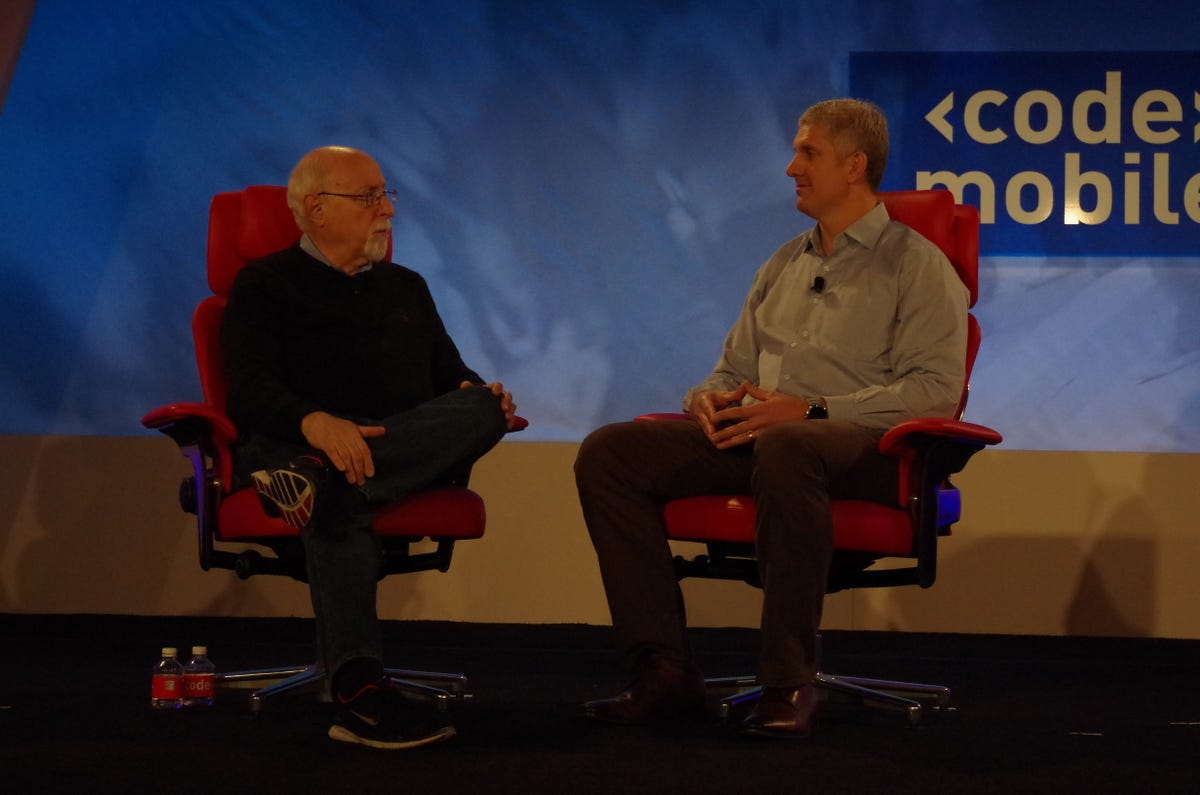
Shara Tibken/CNET
HALF MOON BAY, Calif. — Motorola President and Chief Operating Officer Rick Osterloh isn’t afraid to invite comparisons between his company and Apple.
But it’s not with any of their competing products. Instead, he thinks Motorola today is in a similar position to Apple in the late ’90s, when the company was just clearing past its financial troubles and about to embark on its historic run.
“Quite interestingly, what we’ve gone through in the last year and a half is what they went through many years ago,” Osterloh said at Recode’s Code/Mobile conference here Tuesday.
Motorola is in its “lame duck” phase as it awaits its handover from Google to new parent Lenovo in a deal expected to close by the end of the year, but that doesn’t mean it has sat quietly by. The company has made waves with its highly customizable Moto X smartphone, but has seen more success with its strategy of building extremely cheap smartphones with decent specs, like the Moto G and Moto E.
In fact, as much as Osterloh praised Apple for its “great work,” he believes that his much larger rival’s focus on premium products creates a “huge vacuum” in emerging markets. “That’s an enormous opportunity,” he said.
As for Samsung, he noted the company is wobbling, and can’t be sure that it will remain the market leader in seven years. “It’s hard to say,” he said. “Maybe.”
Motorola, as the inventor of the original cell phone, is still one of the most recognizable brands in the industry. But like many other players in the smartphone business, it hasn’t been able to compete with the likes of Apple and Samsung, which carry much more heft and whose products enjoy more mainstream recognition. Its market share has virtually disappeared as it reduced the number of products to just a handful of smartphones.
See also
- Droid Turbo supercharges Verizon’s franchise with 2-day battery
- Verizon, Motorola to unveil fast-charging Droid in October
- CNET’s take on the Motorola Droid Maxx
But its low-cost smartphones have allowed the company to claw back some market share in fast-growing regions such as Brazil and India. The strategy is based off of Google’s own ambitions to connect more people to Android, so industry observers are wondering whether these smartphones — which many believe yield razor-thin margins — will continue under Lenovo.
Osterloh has told CNET in the past that Motorola’s current strategy will survive under Lenovo, and that the future parent knows and understands what the business is currently doing.
On Tuesday, Osterloh said the business isn’t yet profitable, but is “converging.” He added that he would stick around as president of the unit under Lenovo.
Its flagship product, the Moto X, is much beloved by critics and Android aficionados, but hasn’t been a mainstream hit. Its standout feature is Moto Maker, which allows you to customize the smartphone’s back cover material, colors and wallpaper. Motorola last year had ambitious plans to build the smartphones in the US, and made a lot of noise about it. But it plans to shut down its US plant this year, and has moved production back to China.
Osterloh called Moto X a “modest success,” but said it proved Motorola could innovate.
Motorola was the first to release a circular smartwatch, the Moto 360, which won some critical praise for its design. But the limited Android Wear software and the weak battery life — problems affecting most smartwatches — continue to be impediments for buying the device.
The Moto 360 isn’t going to crush anyone, Osterloh said, least of all the Apple Watch, which is slated to debut early next year.
Meanwhile, Verizon and Motorola on Tuesday unveiled the latest smartphone in Verizon Wireless’ flagship Droid franchise, called the Droid Turbo. It features a whopping 3,900-mAh battery that the companies claim will last up to 48 hours. The smartphone also packs a 5.2-inch Quad-HD display, a 21-megapixel camera able to capture 4K video and 3 gigabytes of RAM. Capping off the power theme, it also comes with a Turbo Charger able to provide 8 hours of battery life on a 15-minute charge.
The Droid Turbo will go on sale October 30 starting at $200 with a two-year contract. A 64GB version will cost $250.
Between its Moto smartphones and the Droid Turbo, which Motorola told CNET will eventually be sold in other markets, Osterloh said he expects an upswing. “You’re going to see our share really rebound here.”



